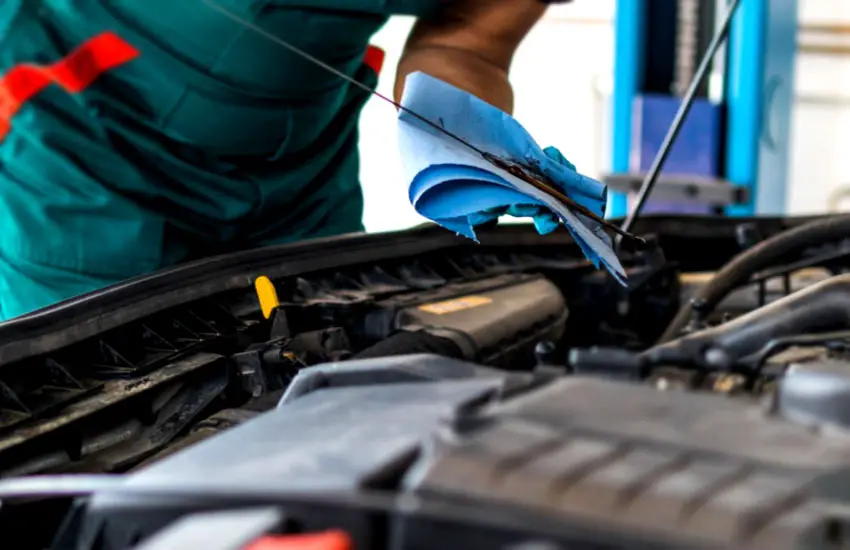As an Amazon Associate, I earn from qualifying purchases at no extra cost to you.
How to Replace Transmission Cooler Lines: 8 Quick Steps
You might be dealing with a transmission cooler line problem if you see leaks or your transmission isn’t working right. Transmission cooler lines help keep your transmission cool. When these lines break or leak, it can cause big issues.
Replacing these lines might seem hard, but it can save you from expensive repairs later. Don’t worry! In this guide, we’ll show you step-by-step how to replace them. We’ll cover everything you need to know, from getting the right parts to finishing the job.

How to Replace Transmission Cooler Lines: Step-by-Step Guide
If your car’s transmission cooler lines are leaking or damaged, you may need to replace them. It can seem like a tough job, but with a few simple steps, you can do it yourself. Here’s a clear guide to help you.
Step 1: Gather Your Tools and Parts
Before starting, get all the tools and parts you need. You’ll need:
- New transmission cooler lines
- Wrenches or socket set
- Pliers
- Screwdriver
- Fluid catch pan
- Rags
Make sure you have everything ready to avoid interruptions.
Step 2: Lift the Car Safely
To replace the transmission cooler lines, you need to lift the car so you can access the lines underneath. Lifting the car safely is crucial to avoid accidents.
Start by using a jack to lift the front of the car. Place the jack under the car’s lift points, which are usually marked in your car’s manual. Slowly pump the jack to raise the car. Make sure it’s high enough for you to comfortably work underneath.
Once the car is lifted, place jack stands under the car. These stands are used to support the car while you work, making it more secure. Never work under a car that is only on the jack because it can slip or fall, which is very dangerous.
After placing the jack stands, gently lower the jack so the car rests on the stands. Give the car a slight push to make sure it’s stable and won’t move. Working under a car safely is important for preventing injuries.
Make sure you have enough space to move around and access the transmission cooler lines. With the car securely lifted, you can now proceed to the next step.
Step 3: Locate the Transmission Cooler Lines
Finding the transmission cooler lines is a crucial part of the replacement process. The cooler lines are metal tubes that carry transmission fluid from the transmission to the radiator.
Look under the car, and find where the transmission connects to the radiator. The cooler lines run from the transmission to the radiator. There should be two lines: one carrying hot transmission fluid to the radiator and one returning cooler fluid to the transmission.
Follow the metal tubes from the transmission to where they connect to the radiator. These connections might be secured with fittings or clamps. In some cars, the lines are marked with labels or colors to help you identify them.
If you have trouble finding the lines, consult your car’s manual. It will have a diagram showing the location of the cooler lines. Knowing exactly where the lines are will help you when it’s time to remove and replace them.
Step 4: Remove the Old Transmission Cooler Lines
Now that you have located the transmission cooler lines, it’s time to remove them. This step requires some care to avoid spilling too much fluid and damaging other parts.
Start by using a wrench or socket set to loosen the fittings that hold the cooler lines in place. These fittings might be a bit tight, so you may need to use some force. Be careful not to damage the threads or surrounding parts.
As you loosen the fittings, transmission fluid will begin to leak out. Position your fluid catch pan under the lines to collect the fluid. This helps keep your workspace clean and prevents fluid from spilling onto other parts of the car.
Once the fittings are loose, carefully disconnect the lines from the transmission and the radiator. If the lines are held in place with clips or clamps, use pliers to remove them. Inspect the old lines as you remove them to check for damage or cracks, which may be why they need replacing.
Step 5: Install the New Transmission Cooler Lines
With the old lines removed, it’s time to install the new transmission cooler lines. This step is important to ensure everything is connected correctly and there are no leaks.
Take the new cooler lines and connect them to the fittings where the old lines were removed. Start by attaching the line to the transmission and then to the radiator. Make sure the lines are positioned correctly and are not twisted or bent.
Use your wrench or socket set to tighten the fittings. Be careful not to over-tighten, as this can damage the threads or fittings. Tighten them just enough to ensure a secure connection without leaks.
Once the lines are installed, double-check all the connections. It’s important that everything is fitted properly to prevent leaks. If you’re unsure about any connection, consult your car’s manual or seek help from a professional.
Step 6: Refill the Transmission Fluid
After installing the new cooler lines, you need to refill the transmission fluid. This is important because the fluid level may have dropped when you removed the old lines.
Find the transmission fluid dipstick, usually located near the engine. Pull out the dipstick and check the fluid level. If it’s low, add the correct type of transmission fluid as specified in your car’s manual.
Pour the fluid slowly into the transmission, using a funnel to avoid spills. Check the fluid level frequently to avoid overfilling. After adding the fluid, put the dipstick back and check the level again to make sure it’s correct.
Properly refilling the transmission fluid ensures that your transmission operates smoothly and prevents damage. It’s important to use the right type of fluid, as specified by your car’s manufacturer.
Step 7: Check for Leaks
With everything installed and the fluid refilled, it’s time to check for leaks. This step is crucial to make sure the new lines are working properly.
Start your car and let it run for a few minutes. As the engine runs, check under the car and around the new cooler lines for any signs of leaking fluid. Look for wet spots or drips.
If you see any leaks, turn off the engine and tighten the connections a little more. It might also help to recheck the installation to make sure everything is in place. Once you’ve fixed any leaks, start the car again and check for leaks once more.
Ensuring there are no leaks is important for the safe and effective operation of your car’s transmission system. Leaks can lead to fluid loss and potential damage to the transmission.
Step 8: Lower the Car and Clean Up
Finally, after making sure there are no leaks, you can lower the car and clean up your workspace. This step wraps up the replacement process.
Use the jack to lift the car slightly, then remove the jack stands. Lower the car slowly until it is back on the ground. Make sure everything is secure before you move away from the car.
Clean up any spilled transmission fluid with rags. Dispose of the old lines and any used fluid properly. Check that all tools and equipment are put away.
With the car lowered and your workspace cleaned, your replacement of the transmission cooler lines is complete. Make sure to drive carefully for the first few miles and monitor for any issues.
I hope this guide made replacing your transmission cooler lines easy to understand. If you follow each step carefully, you’ll get it done right. Remember, taking your time and double-checking everything is key. Good luck with your repair, and enjoy a smoother drive ahead!
What are transmission cooler lines and why do they need to be replaced?
Transmission cooler lines are tubes that carry transmission fluid to the cooler in your car. These lines help keep your transmission from getting too hot. When your transmission gets too hot, it can cause problems and even damage your car.
Why do these lines need to be replaced? Over time, the lines can get old and worn out. They might develop cracks or leaks. When this happens, transmission fluid can leak out. This is a big problem because the fluid is what keeps your transmission cool and working properly.
If the fluid leaks, your transmission might not get enough cooling. This can make the transmission overheat. An overheated transmission can cause serious damage and lead to expensive repairs. Replacing the cooler lines helps prevent these issues. It ensures that your transmission gets the cooling it needs to stay in good condition.
Replacing these lines is important for the health of your transmission. It’s a relatively simple fix, but it’s very important. If you notice any leaks or if the transmission fluid levels are low, you might need to check the cooler lines.
Regular maintenance and timely replacement of these lines can save you from costly repairs down the road. So, keeping an eye on your transmission cooler lines and replacing them when needed is a smart move for keeping your car running smoothly.
Frequently Asked Questions
How can I tell if my transmission cooler lines are leaking?
You might notice a transmission fluid leak if you see red or brown fluid pooling under your car. Another sign is a burning smell from the engine area, which can occur if the fluid is leaking onto hot engine parts. If you see these signs, it’s important to check the cooler lines for leaks.
Can I drive with a leaking transmission cooler line?
Driving with a leaking transmission cooler line is not recommended. Leaking transmission fluid can lead to overheating and damage to your transmission. It’s best to fix the leak as soon as possible to avoid more serious and costly repairs.
How do I choose the right transmission cooler lines?
To choose the right transmission cooler lines, refer to your vehicle’s manual for specifications. You can also ask for help at an auto parts store. Make sure the lines match the size and type of the ones you are replacing. Using the correct parts ensures proper fit and function.
How often should transmission cooler lines be replaced?
Transmission cooler lines don’t have a set replacement interval like some other parts. Instead, you should replace them if you notice signs of damage or leakage. Regular inspections, especially if you have high mileage or frequently tow heavy loads, can help you spot issues early.
Can I replace transmission cooler lines myself?
Yes, you can replace transmission cooler lines yourself if you have basic mechanical skills and tools. Follow the steps carefully to avoid mistakes. If you’re unsure or uncomfortable with the process, it’s a good idea to consult a professional mechanic.
What type of transmission fluid should I use?
The type of transmission fluid you should use depends on your vehicle’s make and model. Check your owner’s manual for the correct fluid type and specifications. Using the right fluid is important for the proper operation and longevity of your transmission.
How do I properly dispose of old transmission fluid?
Old transmission fluid should be disposed of properly to avoid environmental harm. Many auto parts stores and repair shops accept used fluid for recycling. You can also check with your local waste disposal facility for guidance on how to dispose of it safely.
What are the risks of not replacing damaged cooler lines?
Not replacing damaged cooler lines can lead to several risks, including transmission overheating, poor shifting performance, and even transmission failure. Leaking fluid can also cause other parts to get damaged or lead to dangerous driving conditions. Addressing the issue promptly helps avoid these risks.











